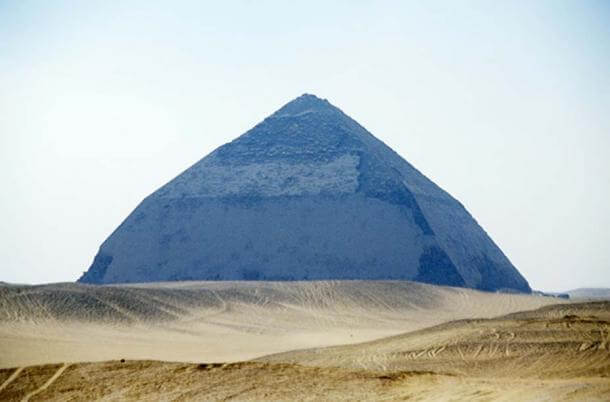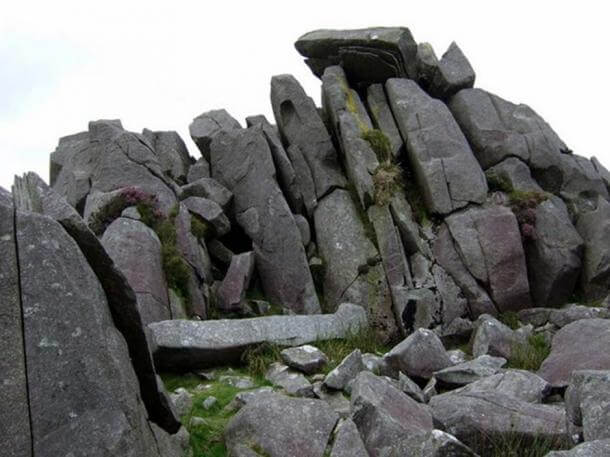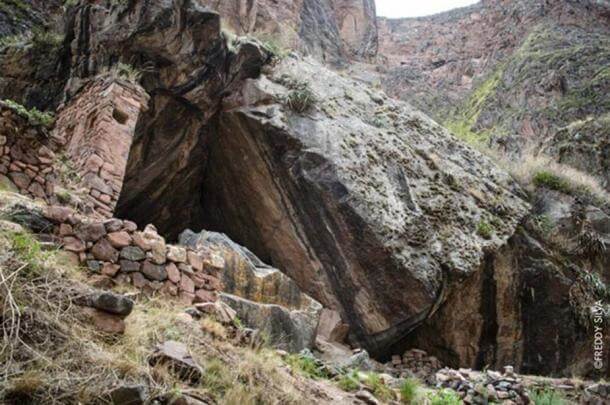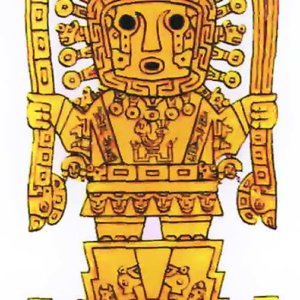 6
6




 31. 01. 2020
31. 01. 2020

In the Andes, almost a vertical ravine in the middle of the wall, someone carved an inverted V-shaped entrance into the rock. Then he cut the bedrock with great precision, creating a shallow door that leads nowhere; similar to those found in ancient Persia and Egypt. He then carved another altar with three niches into the dark blue andesite outcrop. This sacred place is called Naupa Iglesia, or more precisely Naupa Huaca.
It is no coincidence that such a door is called the gates of the soul or the window to paradise: naupa is a resident of the ghost world, and coincidentally, Naupa Huac's door marks the passage of Earth's electromagnetic currents, the same forces capable of producing an extracorporeal experience. Only a really self-contained person does not feel the strong energy of this place. It is permeating and magical. And that is perhaps the very reason why this shrine was carved in such a remote and hard-to-reach place in the Peruvian mountains.
The very nature of this place does not allow any astronomical ties to be considered, so we can openly assume that this temple was used for secret shamanic rituals. Similar temples in other parts of the world are usually found in hard-to-reach places and upon entering one gets into an environment limiting sensory perception, creating conditions suitable for transition to other levels of reality.
The dimensions of the main portal of Naupa Huaca are not random, they are adapted to music notation. The ratio of the length and height of the portal is 3: 2, creating a pure fifth second octave; niche ratio is 5: 6, small third. The 5: 6 ratio is both unusual and filled with important insights. It perfectly describes the movement of the Earth, the pole of which completes the entire orbit of its axis once every 25 years, while the equator level tilts once every 920 years - a 21: 000 ratio. This accurate calculation of the planet's motion is also encoded in another unusual structure - the Angled Pyramid in Egypt, whose angles of inclination contain the same ratio.

Pyramid of Snofru in Dahsur, Egypt.
The most prominent feature of Naupa Huaca's unique space is the ceiling. It was perfectly cut into the ravine wall as if it was made of butter (note that the site is at an altitude of 2987 m) and smoothed with laser accuracy to create two different but specific angles: 60 degrees and 52 degrees . There is only one other place on Earth where these two figures appear together: the angles of inclination of the two great pyramids in Giza.
The mighty earthquakes that regularly plague the Andes have largely damaged this place and prevented further exploration of the space behind the now low dam of piled stone that protects the curious and fearless explorer who set out on the mountain trail from burial by a flood of debris from a partially sunken ceiling . Yet one more anomaly can be explored in this temple: its creator has chosen exactly the only place on the mountainside where the andesite outcrop is located. In clear contrast to the surrounding sandstone, andesite contains exactly the kind of crystals that were used by the first radio receivers just because of their excellent piezoelectric properties. This rock is also magnetic, another property essential for shamanic travel. Dolerite, a rock related to andesite, was chosen just for the construction of the oldest part of Stonehenge and forced its builders to travel to its outcrops in 241 km distant Wales.
This outcrop was masterfully machined into three niches, and despite being partially damaged by explosives detonated by religious fanatics, this delicate work is still evident. Its central niche is shaped in the same ratio as the musical notation of the pure quint, 3: 2.

Stones at Carn Menyn in Wales. These dolorite slabs, broken by frost, look as if they were stacked and ready to be pulled.
The three-stage layout is the decisive element of the Andean worldview: the creative underworld, the physical middle world, and the ethereal upper world. This concept is idealized in a chakana amulet, commonly known as the Andean Cross. Chakana literally means "bridge" or "cross", and describes how the three levels of existence are interconnected by a hollow straw of reed - an idea shared by ancient Persians, Egyptians, Southwest residents, and Celts. The oldest depiction of this motif was engraved in a monolith in Tiwanak, the oldest temple complex in the world, and differs from the others in that it is not a square-shaped but rectangular 5: 6 aspect ratio.
It seems that Naupa Huaca was designed by a cosmic stonemason for anyone who wanted to enter another level of reality and communicate with gods who, in those ancient times, were either natural forces or powerful people who personified or manipulated these forces.

Angles clamped stones on exposed rock gorge in Naupa Iglesia.

Viracocha
As for the nation that created it, we can safely rule out the Incas. Inca stonework cannot be compared in scope and quality, it has only inherited and maintained a culture that had long since ceased to exist in the 14th century. Even the ancient Aymaras claimed that such temples were built long before the Incas. Naupa Huaca's stonemason style matches that found in Cuzco, Ollantaytamb and Puma Punku, and what these places have in common is the myth of a wandering divine builder named Viracocha, who, along with the Seven Bright, appeared in Tiwanak to help humanity get back on its feet after the catastrophic flood of the world dated around 9703 BC